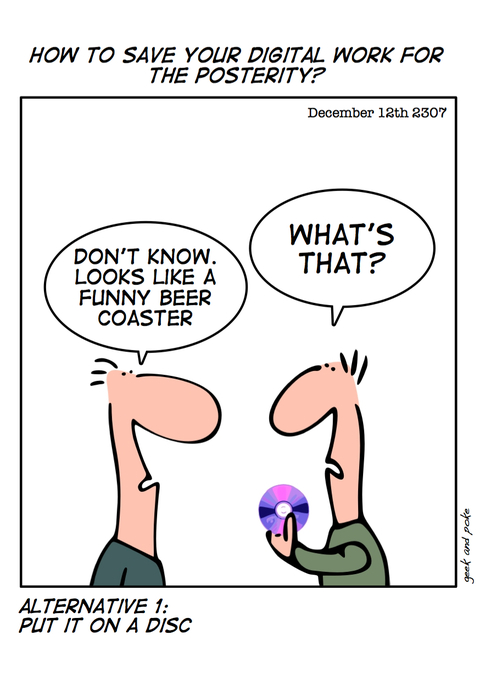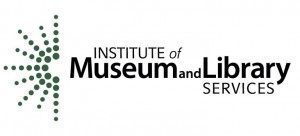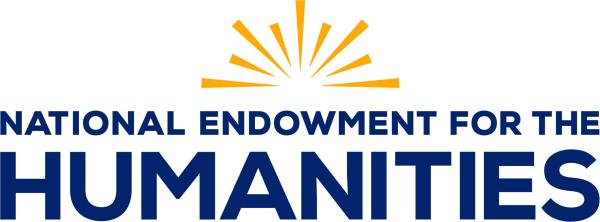Many people assume that digital files are superior to analog formats. Who doesn’t like to search for what they need online and have access to it instantly? Surely the market will keep up with our demand for access! But who is providing that content and how much will you have to pay each time you use it? As curators for evidence of our cultural heritage, we owe it to our institutions, patrons AND our future selves to think through DP (digital preservation) issues as soon as a digital object is created.
On the surface, the superiority of digital content seems obvious. We often hear that digital files take up less space, cost less to create and use fewer natural resources to store more data. Besides, everyone and everything is going digital….how could it be a problem for our future? I’d argue that the perceived strengths of digital storage are also their weaknesses:
1) Less space—the danger with this idea is that it leads us to think we can keep everything. Also, our need to purchase lots of storage space may lull us into thinking it’s okay to purchase cheap storage. Buying cheap storage will make system failure more likely. Relying on “free” or cheap cloud space subjects our collections to the will of commercial hosts’ practices of data mining our content or pulling the rug out by closing the site altogether.
2) Costs less—costs are hidden. The number one resource digital things need is the thing most people don’t usually think about: people. People power is needed to create digital files that are usable and identifiable now and 50 years from now; additionally, some person has to set up, and possibly initiate, frequent migration of file formats. Good DP systems also have subscription or purchase costs.
3) Uses fewer resources—saving paper or not printing photographs does save the environment from the chemical processes needed to create the material, but if something goes wrong and a file becomes corrupt (called “bit rot”), some knowledgeable person must intervene and find or create a replacement.
The latter point, about file replacement, currently has a technological solution: multiple copies of the same file can be shared in a DP system and examined for bit rot. When a file becomes corrupt, the system can be designed to automatically call up one of the other file locations and create a new copy. But all of this is dependent on the ability of people to create the object in a migrate-able format to begin with and include enough information in the item so that people far into the future will be able to find it and understand it.
| Finally, think about how fast digital file formats change. As cultural heritage curators, we do not have the luxury of stuffing digital media into an archivally sound box and walking away.If we ignore it, it will go away. |  Source: http://geekandpoke.typepad.com Source: http://geekandpoke.typepad.com |





1 comment
3 pings
I’m imesprsed. You’ve really raised the bar with that.
[…] Many people assume that digital files are superior to analog formats. Who doesn’t like to search for what they need online and have access to it instantly? Surely the market will keep up with our d… […]
[…] Many people assume that digital files are superior to analog formats. Who doesn’t like to search for what they need online and have access to it instantly? Surely the market will keep up with our d… […]
[…] Meg pointed out the whys and wherefores of digital preservation in her last post. […]